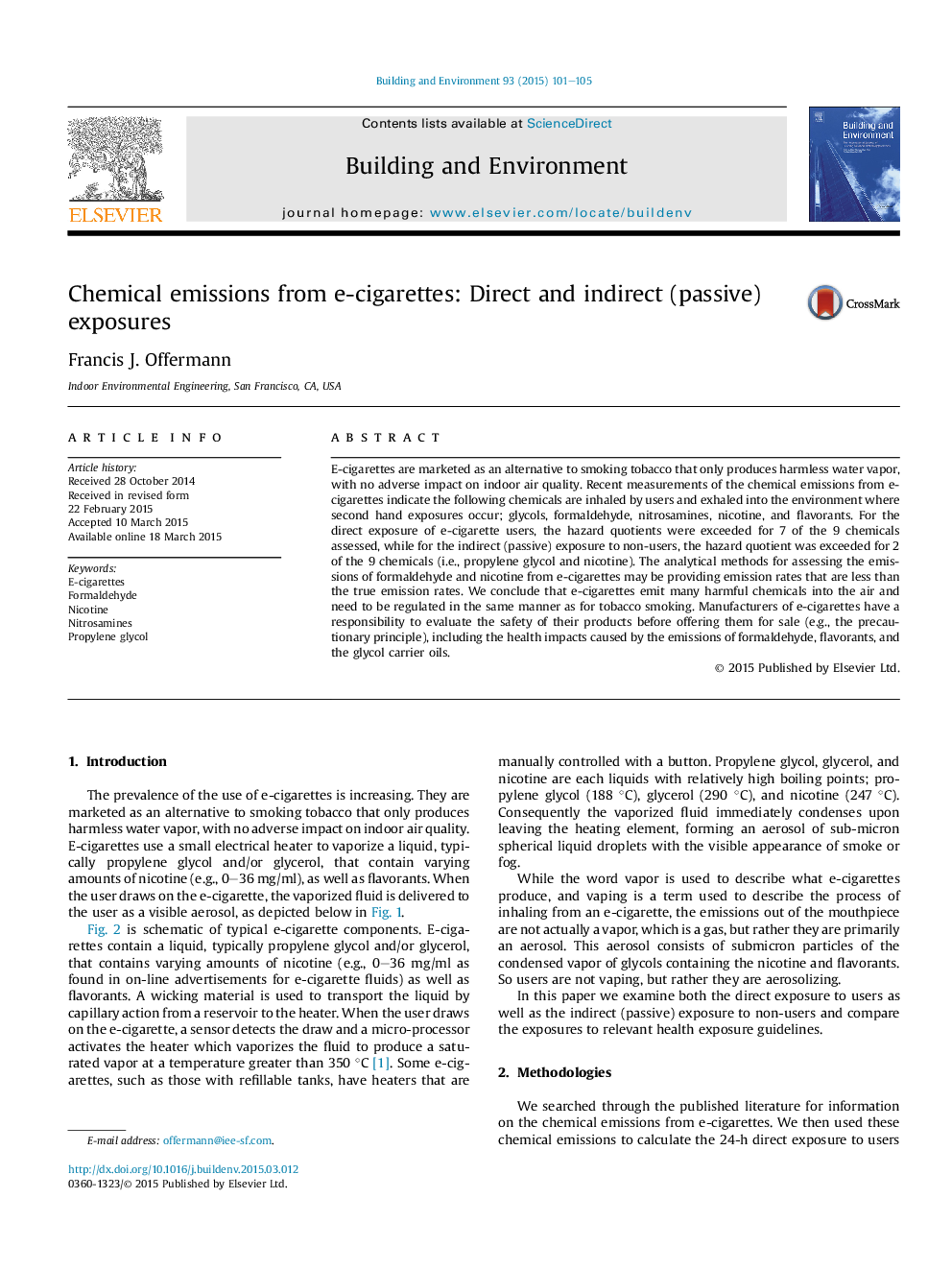| Article ID | Journal | Published Year | Pages | File Type |
|---|---|---|---|---|
| 247933 | Building and Environment | 2015 | 5 Pages |
•E-cigarettes are marketed as only producing harmless water vapor.•E-cigarettes emit glycols, formaldehyde, nitrosamines, flavorants, and nicotine.•Analytical methods may be underestimating emissions of formaldehyde and nicotine.•E-cigarettes need to be regulated in the same manner as tobacco smoking.
E-cigarettes are marketed as an alternative to smoking tobacco that only produces harmless water vapor, with no adverse impact on indoor air quality. Recent measurements of the chemical emissions from e-cigarettes indicate the following chemicals are inhaled by users and exhaled into the environment where second hand exposures occur; glycols, formaldehyde, nitrosamines, nicotine, and flavorants. For the direct exposure of e-cigarette users, the hazard quotients were exceeded for 7 of the 9 chemicals assessed, while for the indirect (passive) exposure to non-users, the hazard quotient was exceeded for 2 of the 9 chemicals (i.e., propylene glycol and nicotine). The analytical methods for assessing the emissions of formaldehyde and nicotine from e-cigarettes may be providing emission rates that are less than the true emission rates. We conclude that e-cigarettes emit many harmful chemicals into the air and need to be regulated in the same manner as for tobacco smoking. Manufacturers of e-cigarettes have a responsibility to evaluate the safety of their products before offering them for sale (e.g., the precautionary principle), including the health impacts caused by the emissions of formaldehyde, flavorants, and the glycol carrier oils.
